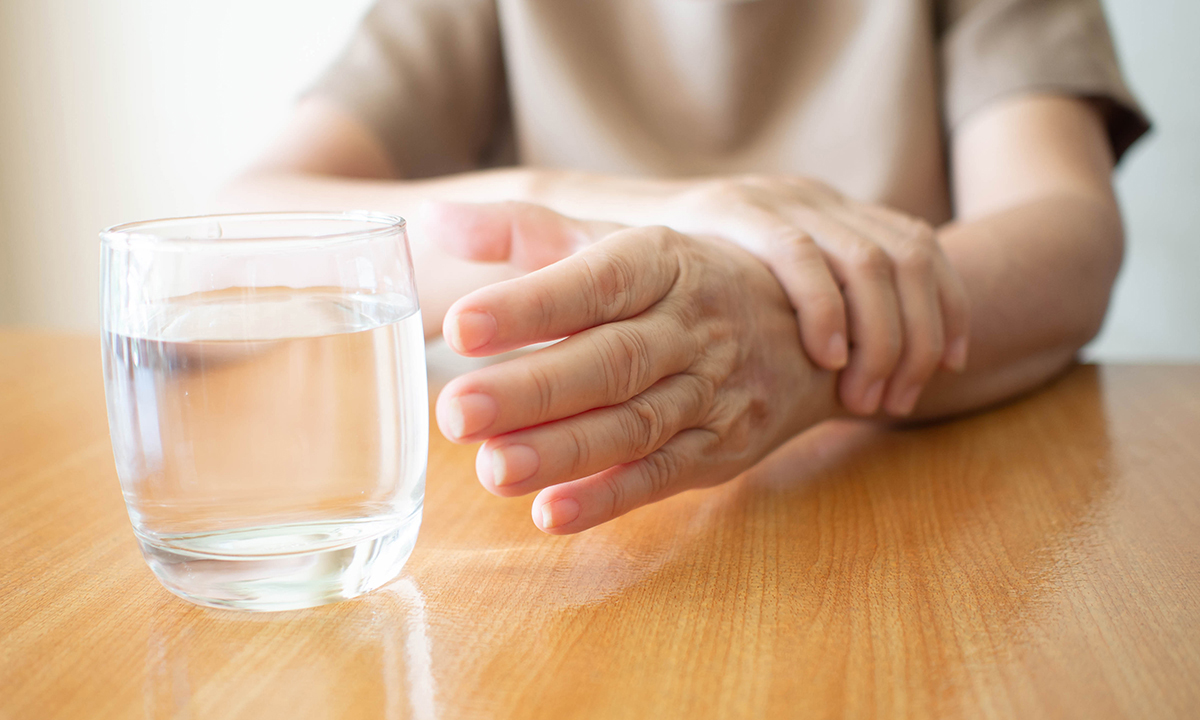A CONCERTED push to stop Parkinson’s disease in its tracks is now underway, with researchers planning innovative programs to combine drug trials with genetic analyses to better target therapies.
Speaking to InSight+ ahead of World Parkinson’s Day on 11 April, Professor Simon Lewis, Professor of Cognitive Neuroscience at the University of Sydney’s Brain and Mind Centre, said the Federal Government’s announcement in January 2019 of $30 million funding over 5 years for the Australian Parkinson’s Mission provided a significant boost to efforts to halt or slow the progression of Parkinson’s disease.
The Mission is an Australian-led international collaboration, developed by the Garvan Institute of Medical Research, Shake It Up Australia Foundation, Parkinson’s Australia, the Cure Parkinson’s Trust and the Michael J Fox Foundation for Parkinson’s Research.
Professor Lewis, National Trials Leader for the Mission, said the first of a series of innovative disease-modifying drug trials would get underway in the coming months.
“I have been charged with leading a clinical effort to get a series of programs of disease-modifying trials where we can evaluate drugs that we think might stand a chance of doing something, but also link those trial findings with patients’ genetic analyses and other biomarkers that might allow us to pick the right drugs for the right patients in the future,” he said.
Professor Lewis said the first trial has a novel “umbrella design” with a placebo arm and four active drug arms.
“The aim is to screen as many drugs as we can with a view to putting them into larger trials,” he said.
Professor Lewis said the prevalence of Parkinson’s disease in Australia was increasing by 4% per year, reflecting both population growth and an ageing population.
He said about 1–2% of people over the age of 60 years will develop Parkinson’s disease, increasing to 3–4% for people aged over 70 years, and 4–5% in those over 80 years. According to estimates by Parkinson’s Australia, the total economic burden of the disease was around $12.3 billion in 2018.
Professor Lewis said it was a “big ask” to find a cure for a disease that had several different causes – both genetic and environmental – and manifested in patients in various ways. A further significant challenge was a lack of a diagnostic test, he said.
“A lot of [conditions] look like Parkinson’s,” he said, adding that even in the most experienced hands, the diagnostic rate was still only 90–95%.
“[In] the other 5%, a number of those cases will be diseases that are worse than Parkinson’s disease and a small number will be better than Parkinson’s disease, so making the diagnosis is tricky,” he said. “We only have clinical diagnostic criteria to go on, there is no whizz-bang test, although lots of people are working on finding one.”
Professor George Mellick, Vice President of Parkinson’s Australia, who is also Deputy Director of the Griffith Institute for Drug Discovery, agreed that diagnosis remained one of the biggest challenges for Parkinson’s disease researchers.
“By the time someone develops the classical movement symptoms, required for an accurate diagnosis of Parkinson’s disease, the majority of the affected brain cells have already died,” he said. “Of course, we are getting better at identifying some … prodromal signs, but this is something that is critical for success.”
He said successful neuroprotective therapies would require early intervention.
“There are a lot of people dabbling in this space, but nothing is really close to nailing this issue. One way we’ve been addressing this challenge is by closely studying unaffected relations of [patients with Parkinson’s disease] in families with genetic forms of the disease. These people are at risk of going on to develop Parkinson’s disease and can teach us about what to look for in terms of early diagnostic clues.”
Professor Lewis said that with so many versions of Parkinson’s disease, it was unlikely that just one drug would emerge as a “magic bullet” for all patients. Rather, patients were likely to benefit from a combination of several drugs, as was the case for human immunodeficiency virus (HIV) and tuberculosis.
He said research interest had focused recently on repurposed drugs, with some early success achieved in a small trial investigating the diabetes drug, exenatide (a glucagon-like peptide-1 agonist). The positive results have prompted calls for a larger, multicentre trial of the drug.
However, another small trial investigating the supplement inosine (the phase 3 clinical trial of inosine in Parkinson’s, or the SURE-PD3) was cancelled early.
In Australia, a new symptomatic treatment, safinamide (a monoamine oxidase B inhibitor), was included on the Pharmaceutical Benefits Scheme in April 2019.
Professor Lewis said it was useful to have another symptomatic treatment, but “in terms of the big challenge, we would really like to be able to stop the disease from progressing”.
In addition to the research funding, the Federal Government earmarked a further $6.8 million for Parkinson’s nurses to better support the 100 000 Australians currently living with the disease.
Professor Lewis said Parkinson’s nurses would provide much needed support to GPs in managing patients with Parkinson’s disease.
“Specialist nurses can be trained to be the point of contact between the patient, the GP, the allied health [professional], the specialist,” he said, adding that specialist Parkinson’s nurses had been shown to be beneficial in the United Kingdom. “These nurses can be on the lookout for red flags – [such as the early signs of dementia] – at the pointy end of the disease, which is helpful.”
Professor Mellick concluded: “There is certainly a lot of excitement in the Parkinson’s community and an expectation that this funding will allow researchers across Australia to work together to make a real difference and learn important new things”.

 more_vert
more_vert
Hi interesting reading and that 1-2% of people over the age of 60 will develop Parkinson disease.
Do you know the percentage of people in their 50ies. I’m 53 and just been diagnosed with Parkinson’s.